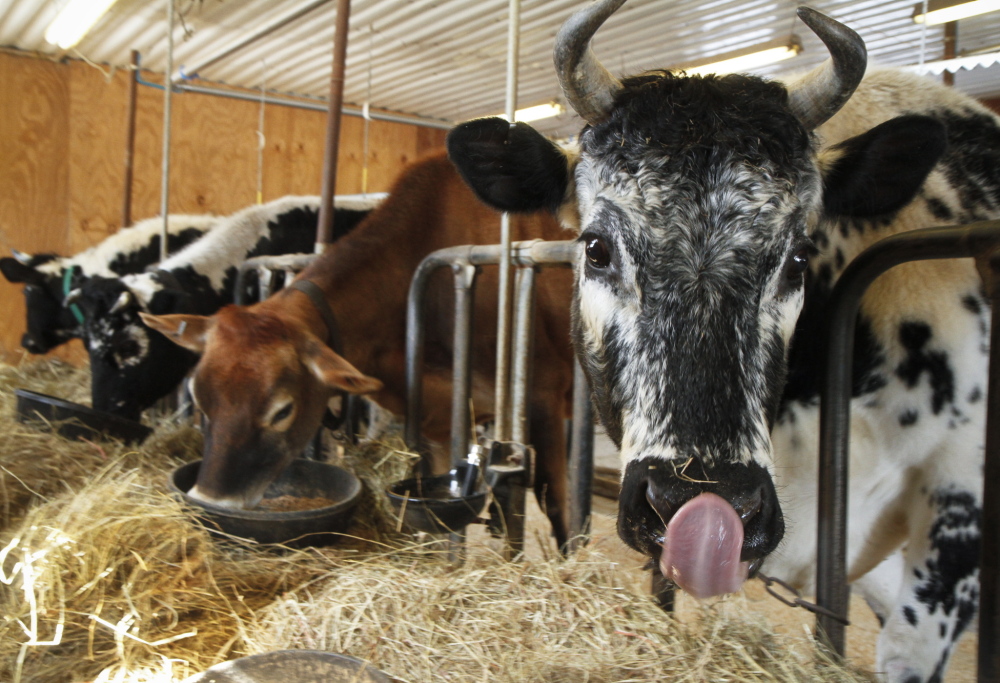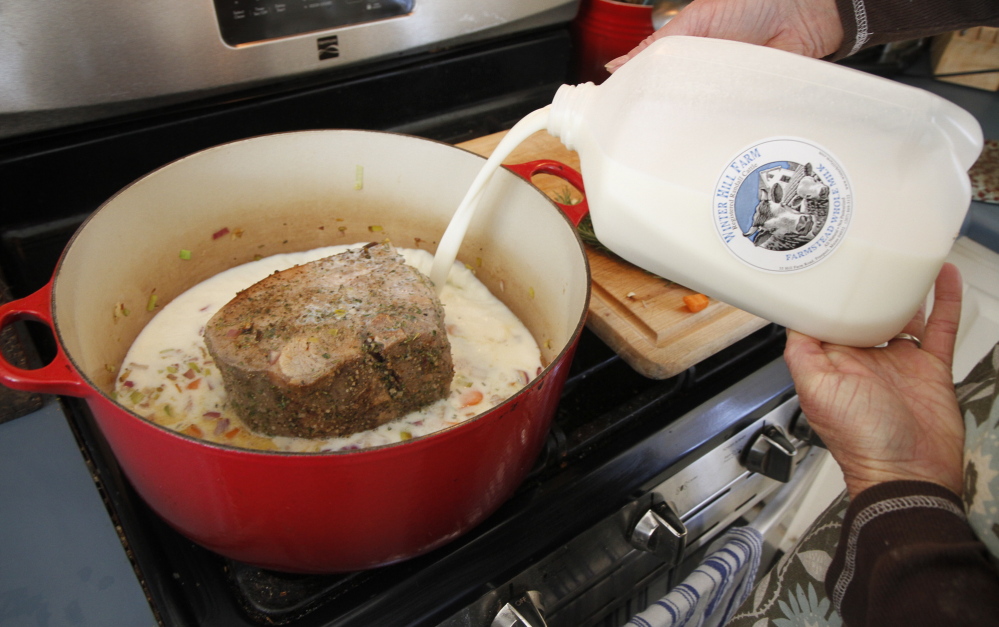Sarah Wiederkehr and her husband Steve Burger manage the lovely Winter Hill Farm, about five miles from Freeport. The farm keeps rare Randall cattle and also a few Jersey cows, producing raw milk, yogurt, and artisanal cheeses. We asked Wiederkehr for a recipe using that milk and she did us one better – giving us a recipe that combines raw milk with meat from one of her prized Berkshire pigs. Pork Braised in Milk is a classic Northern Italian dish – apt, as few places do farm-to-table better than Italy. Weiderkehr first discovered a recipe online, and she adapted it to suit herself. “The interesting thing for us about this dish is our pigs are fed a lot of milk and whey in their life, so milk is a pretty big part of their lives. That’s what makes the pork so special. It’s a really great dish to tie together all the aspects of our farm.”
Pork Braised in Milk
Sarah suggests the rib end of the butt, not the blade end, as the best cut for this recipe. For the herbs, she likes thyme and rosemary, and she often serves the dish over roasted-garlic polenta.The milk curdles as it cooks, which doesn’t look pretty, but those cheese curds taste “really yummy,” Wiederkehr says. “It’s not be feared; it’s a really, really wonderful side effect of this process, these really delicious chunks of cheese.”
Fresh herbs
Salt and pepper
1 pork butt roast, preferably rib-end
½ cup butter or olive oil
4 cloves garlic, chopped
1 large onion, peeled and chopped
2 leeks, chopped
2 medium-sized carrots, chopped
½ to 3/4 gallon milk
2 lemons, halved
Heat the oven to 250 F. Chop the herbs and mix with salt and pepper; the amount you use will depend on the size of your roast. Rub the herb-salt mix over the surface of the pork roast, coating it completely. Set the roast aside while you prep the vegetables.
Set an enameled Dutch oven (or any large oven-proof pot with a snug lid) on the stovetop over medium-high heat. Add the butter (or oil). When the pot is hot and the butter has melted, place the roast in the pan and brown well on all sides. As it browns, add the garlic, onion, leeks and carrot. Gently stir the vegetables to keep them from burning, but don’t disturb the roast. When the pork is browned all over, add the milk; it should come partway up the pork, but not cover the meat. Then squeeze the lemons into the pot and drop the squeezed lemon halves in, as well. Cover the pot and bring it to a simmer, then transfer it to the oven.
Slowly braise the pork, undisturbed, until its internal temperature reaches 160 F, 3+ hours, depending on the size of the roast. Remove the pot from the oven, remove the roast from the pot, and let it rest, covered in foil to keep it warm, about 20 minutes (Sarah is casual about it, “whatever it takes me to put together the rest of the meal”). Meanwhile, strain out the lemons, vegetables and herbs. If you like, pick out the bits of cheese that have formed to snack on or to eat with the meal. Blend the remaining liquid with an imersion blender and cook it down on the stovetop to make a rich sauce for the meat.
Do you have a sustainable recipe? Send it to us and explain how it fits your definition of sustainable, and we’ll consider using it in a future column. If the recipe came from a cookbook or online source, be sure to include the source.
Send questions/comments to the editors.





Comments are no longer available on this story